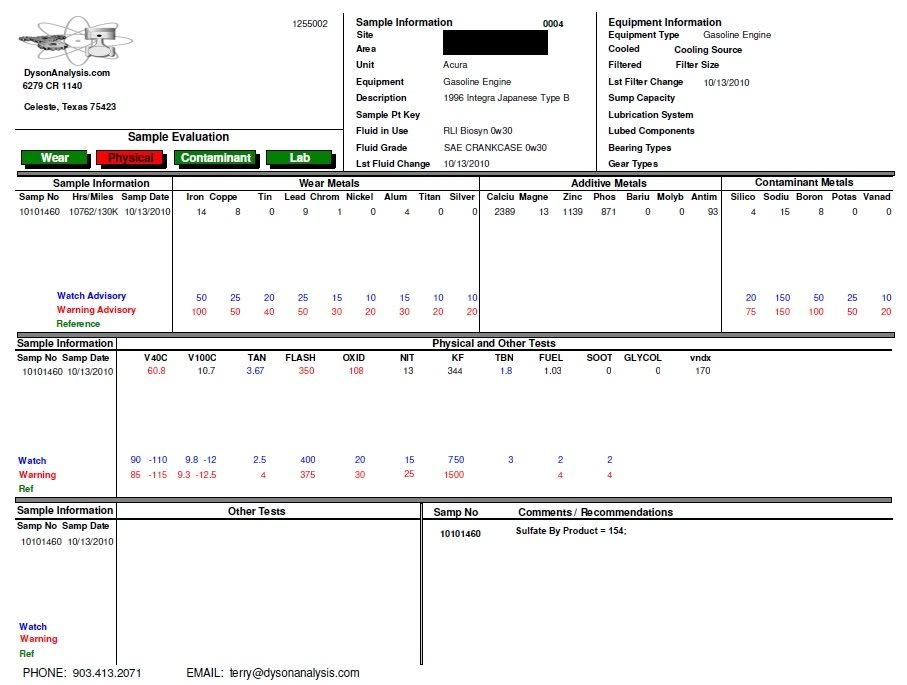This is from my brother's car. I'm ninja-posting it without telling him. Maybe he'll find out and chime in. Or maybe he'll yell at me. Who knows.

The car is a '96 Acura Integra with a '97 Japanese-spec Type R engine (B18C Spec R). Totally stock inside; short-ram intake and full head-back exhaust outside. Stock tune. Amsoil EaAU air filter (something like 30k-40k miles old at the time of the sample), Mobil 1 oil filter, and a magnetic drain plug.
Driving is mostly mild on suburban roads with a few highway trips each week. On the rare occasions when it is driven hard, it sees all 8600 RPM and full throttle every time.
Oil consumption seemed to be around 1 qt/2000 miles and dropping.
Results are pretty dang good for an oil that is designed more for low drag than for extended drains (starting TBN is something like 6). We re-filled with the same oil, so we expect results and consumption to improve as the chemistry settles in -- not to mention that RLI has tweaked the formulation, so the oil itself is even better this time around. If he can get a tune or otherwise fix the fuel dilution, we will likely attempt a 15k mile OCI on this oil.

Previous UOAs (from Blackstone so not directly comparable):
Motul 8100 X-Lite 0w-30
GC
Motul 8100 X-Cess 5w-40

The car is a '96 Acura Integra with a '97 Japanese-spec Type R engine (B18C Spec R). Totally stock inside; short-ram intake and full head-back exhaust outside. Stock tune. Amsoil EaAU air filter (something like 30k-40k miles old at the time of the sample), Mobil 1 oil filter, and a magnetic drain plug.
Driving is mostly mild on suburban roads with a few highway trips each week. On the rare occasions when it is driven hard, it sees all 8600 RPM and full throttle every time.
Oil consumption seemed to be around 1 qt/2000 miles and dropping.
Results are pretty dang good for an oil that is designed more for low drag than for extended drains (starting TBN is something like 6). We re-filled with the same oil, so we expect results and consumption to improve as the chemistry settles in -- not to mention that RLI has tweaked the formulation, so the oil itself is even better this time around. If he can get a tune or otherwise fix the fuel dilution, we will likely attempt a 15k mile OCI on this oil.

Previous UOAs (from Blackstone so not directly comparable):
Motul 8100 X-Lite 0w-30
GC
Motul 8100 X-Cess 5w-40


